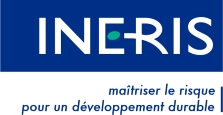PRESTATION :
Flammability and explosiveness of powders, gases and vapours

The industrial use of combustible gases, liquids, vapours or solid powders generates a risk of fire and explosion. Numerous accidents still occur in the industry, which often have very heavy human and economic consequences.
The regulatory requirements concerning explosive atmospheres (ATEX) are issued from the European ATEX Directives 94/9/CE and 1999/92/CE. They require employers to evaluate explosion risks and to take the appropriate preventive and protective measures to ensure the health and safety of their employees. They also require to classify ATEX zones, in which only ATEX certified equipment is to be used.
To meet these requirements, it is necessary to assess the flammability and explosiveness of combustible materials used in the process and to take into account the physical phenomena at the origin of ATEX formation and ignition. Various parameters must be determined by laboratory testing.
Ineris is able to assess experimentally the flammability and explosiveness of your powders or dusts, liquids and gases, in line with standardised testing methods. Ineris evaluates the capacity of your material to generate an ATEX, assesses its ignition sensitivity in order to identify potentially active sources of ignition and measures its explosion violence characteristics.
Capacity to generate an ATEX
In order for a combustible material to generate an explosion, its concentration must be comprised within the explosive range, defined by the lower (LEL) and upper (UEL) explosive limits in the air. In the specific case of dusts and powders, only the LEL is taken into account. Moreover, for these materials it may be useful to determine at this stage the characteristics of explosion violence in order to assess their capacity to form an ATEX when they are suspended in air. As for liquids, knowledge of the flash point is necessary but not sufficient to evaluate the risk associated with the liquid-vapour equilibrium situation. Indeed, it is preferable to use in this case the lower explosive point value, which is the temperature at which the vapour concentration in equilibrium with the liquid phase is equal to the LEL. Finally, the experimental determination of the limiting oxygen concentration (LOC) allows the establishment of the ternary explosiveness diagram of a material in the presence of an inert gas. This characteristic depends both on the combustible material and the nature of the inert gas.
Sensitivity to ignition
The risk of ignition by a hot surface must be considered in relation to the auto-ignition temperature (AIT) values of a gas or a vapour, or the minimum ignition temperatures (MIT) of a dust or powder on a surface and as a cloud. In some cases, it may be necessary to describe the self-heating capacity, by means of a differential thermal analysis test coupled with a gravimetric thermal analysis (DTA-GTA). If this test shows that the material is prone to self-heating, tests in isothermal heat chambers are used to establish the relation between the storage dimension and the critical self-heating temperature. The minimum ignition energy (MIE) gives information about the types of instantaneous ignition sources to be considered. In the case of flammable powders, it is also useful to measure the volume resistivity and half-decay time.
Explosion violence
Explosion violence is evaluated by means of tests through which two characteristic values are determined: the maximum explosion pressure: Pmax and the maximum speed of pressure rise: (dP/dt)max, which is then used to determine the dust explosion constant (Kst).

